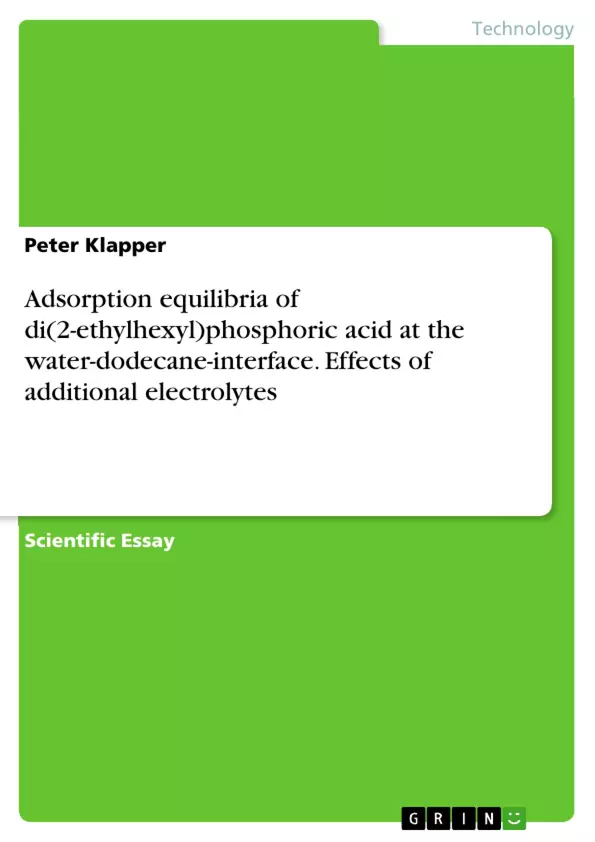The processes during the reactive metal salt extraction are significantly influenced by interfacial processes. The interfacial tension in such systems results from the mass transfer operations at the interface. In this work it is shown how the equilibrium interfacial tension can be described a thermodynamic model.
Inhaltsverzeichnis (Table of Contents)
- Introduction
- Experimental
- Modelling
- Results and discussion
- Conclusion
Zielsetzung und Themenschwerpunkte (Objectives and Key Themes)
This work presents a new modelling strategy for adsorption equilibria and interfacial tension at the water-dodecane interface. The study focuses on the adsorption behavior of di(2-ethylhexyl)phosphoric acid (D2EHPA) in its monomer and anion forms, considering the influence of additional electrolytes.
- Adsorption of D2EHPA monomer and anion at the water-dodecane interface
- Impact of counterion adsorption on interfacial tension
- Pseudo-nonionic modelling strategy for adsorption equilibria
- Integration of micelle formation into the model
- Experimental determination of equilibrium interfacial tension using pendant drop tensiometry
Zusammenfassung der Kapitel (Chapter Summaries)
The introduction sets the stage by explaining the importance of surfactant adsorption at liquid-liquid interfaces and how it influences various aspects of fluid engineering processes. It discusses the limitations of existing methods for describing D2EHPA adsorption and highlights the need for a more comprehensive approach that accounts for counterion adsorption.
The experimental chapter details the methods used to measure equilibrium interfacial tension at the water-dodecane interface. The pendant drop tensiometer setup and the procedure for preparing and analyzing samples are described. This chapter also provides information about the chemicals used in the study.
The modelling chapter presents the theoretical framework for understanding the adsorption behavior of D2EHPA. It introduces the Gibbs adsorption equation and explains how the Langmuir and Stern isotherms are used to describe the adsorption of the monomer, anion, and counterions. The chapter also explains how micelle formation is incorporated into the model.
Schlüsselwörter (Keywords)
Di(2-ethylhexyl)phosphoric acid, interfacial activity, adsorption equilibrium, counterion adsorption, pseudo-nonionic modelling, liquid-liquid-interface, interfacial tension
- Quote paper
- Dr.-Ing. Peter Klapper (Author), 2014, Adsorption equilibria of di(2-ethylhexyl)phosphoric acid at the water-dodecane-interface. Effects of additional electrolytes, Munich, GRIN Verlag, https://www.grin.com/document/280154



